General accounting
IX. 35. Income tax and dividends
Video
We are progressing toward realistic accounts.
We saw basic income statements and balance sheets. Here is an example of income statement, as we have studied them so far:
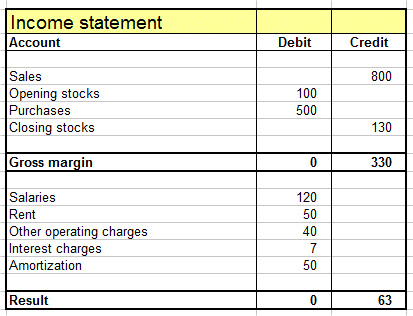
To make it more realistic, we need to modify it a bit.
Usually the interest charges are presented after an intermediate result called "operating result", like this:
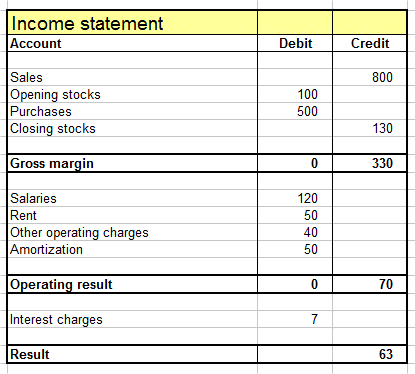
The reason is that the interest charges are not related to operations, but to the structure of financing of the firm, that is the structure of its liabilities.
Another intermediate result, which we did not show, is the result even before amortization: it is called the EBITDA (= earnings before interest taxes depreciation and amortization). Here, it is 70 + 50 = 120.
It may sound strange to say that "interest charges are not related to operations", but think of two firms which have exactly the same assets and the same organisation of production. Suppose they differ only by their liabilities: one has no external costly debt (i.e. no loan) and the other has costly debt.
As far as operations are concerned they are totally equivalent.
They differ only by their structure of financing.
This difference entails an extra charge for the indebted firm. But aside from that they have the same result (before financial charges). That is why the result before possible interest charge is called "the operating result". And they have the same.
Firms pay taxes of two types:
- a tax on their value added, called VAT (= Value Added Tax), which we will study in a later lesson.
- a tax on their result, called "income tax": we study it now.
The income tax varies from about 10% to about 40%, depending upon countries, periods, industries, legislation, etc. Let's consider a representative tax rate of 25%.
So our firm will have to pay 25% on its result of 63. To have round numbers, let's make it 16.
Then the bottom line will be 63 - 16 = 47.
(This will be the final bottom line! I'll not introduce other charges changing again the bottom line, even though we shall see calculations after the bottom line...)
The income tax is treated as a transaction made at the end of the accounting cycle (after we have calculated the result before tax).
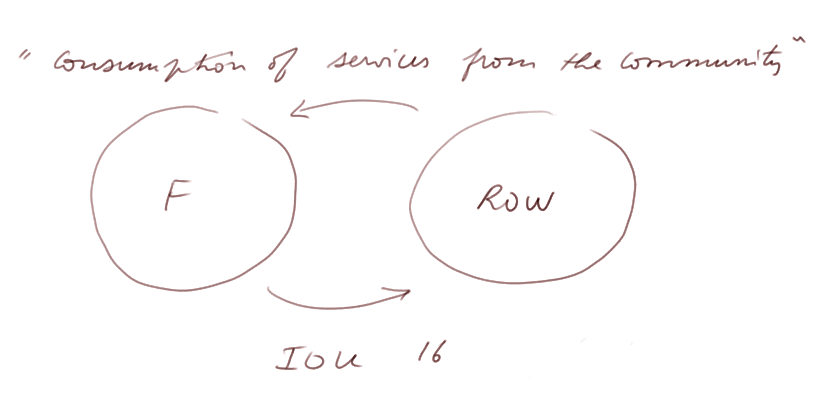
The IS becomes
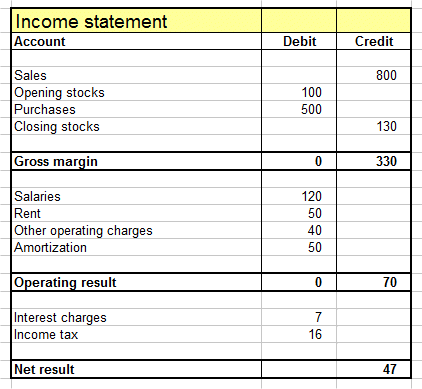
The tax is computed at the end of all the calculations to prepare the IS. This takes several weeks or months after the end of the accounting cycle. Typically it is finished in February or March of the following year if the cycle is the calendar year.
The tax is not paid immediately after its calculation. It is first of all a credit to the State recorded in the liability side of the balance sheet. For calendar year cycles, it is typically due before September of the following year.
The Net result of 47 doesn't go entirely into the Σ P&L on the liability side of the BS.
The firm board of directors (representing the shareholders when they are numerous), or the owners of the firm decide which part of the Net result will be "retained" in the firm, and which part will be distributed as dividends.
Suppose the directors decide to distribute (as dividends) 27, and to retain 20. Then in the ending BS the Σ P&L will increase only by 20. This is why the more usual name of the Σ P&L is Σ retained earnings.
And 27 will be recorded at the bottom of the liabilities as due to the shareholders.
The dividends are also treated as a transaction.
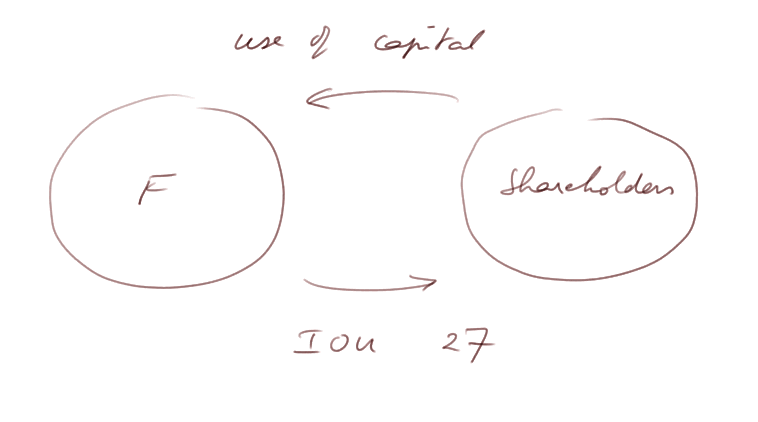
They are payable whenever the directors deem it appropriate.
A common misunderstanding may come from this split of the Net result.
Since we "consider this Net result" and decide how to split it between the firm (retained earnings) and the shareholders (dividends), it seems to imply that it is a clear sum of money. But it is not.
It is an increase in the Net worth of the firm, that is an increase in assets minus any increase in external liabilities.
Whatever cash flow was generated during the year is not directly related to the profit. That's one of the difficult things to understand about accounting: double-entry accounting is a value accounting, where cash is only one type of value.
There may be no cash available to pay the dividends, in which case shareholders will have to wait. They may also receive dividends even though the firm made losses.
The analysis and reconciling of value movements and cash movements will be the subject of the Cash Flow Statement, treated in a later lesson.
Suppose the beginning balance sheet was this:
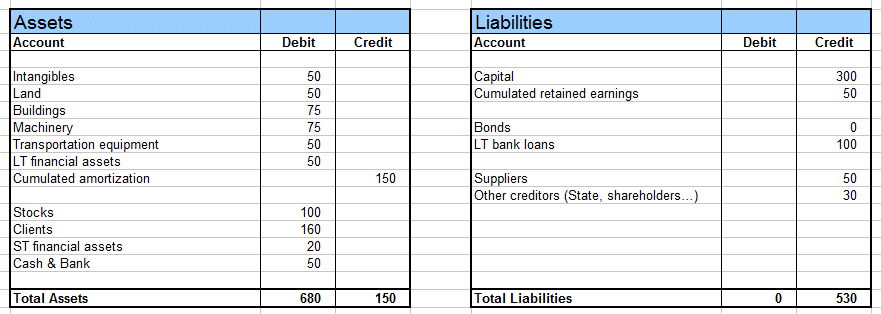
We are already familiar with some of the items (machinery, stocks, clients... capital, loans, suppliers...). Let's see the new ones:
- intangibles are patents, and expenditures to found the firm (which are capitalised)
- LT financial assets are titles of ownership of subsidiaries, or financial securities the firm intends to keep for a long time
- ST financial assets are financial securities into which we have invested some idle cash to make it work in the short term
- bonds are loans not from banks but directly from lenders operating on financial markets
- other creditors are the new creditors we just saw: the State to which we owe past taxes, and the shareholders waiting for the payment of their dividends.
We see in this example cumulated retained earning from the past amounting to 50.
Then the 20 of retained earnings of the year will be added to the 50 at the end of the present cycle.
Then a possible evolution of the BS, with the IS in between, is presented below:
BS year -1 IS year BS year
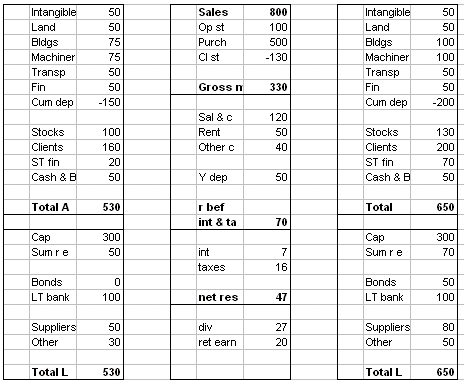
It is another presentation of the same beginning BS, as well as the IS of the year, we just saw.
The ending BS is the column on the right. We see that the Sum of retained earning went from 50 to 70.
There are many other changes in the BS, which are the result of all sorts of transactions that do not show in the IS.
IS and BS are synthetic documents; they do not show everything - and that is why they are useful. Only the Journal or the Ledger contain the information about all the transactions of the firm. From them we can produce the IS and BS (as we did), but the converse isn't true: from the IS and BS we cannot reconstruct all the transactions. In particular, we cannot understand entirely the evolution of the BS only from the IS.
We shall comment on this in the next lesson where we look at the evolution of IS and BS over several years.



